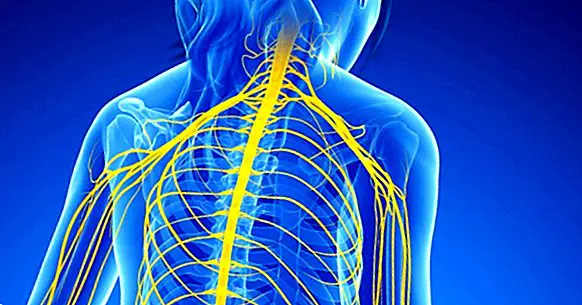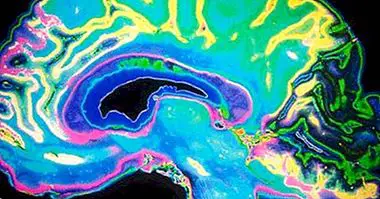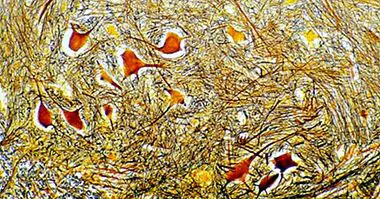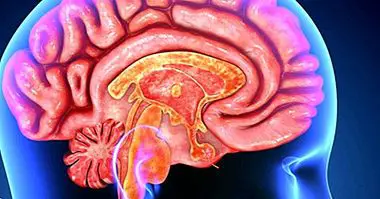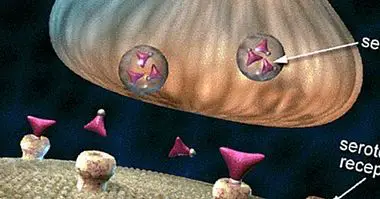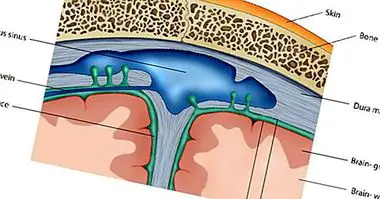Parts of the Nervous System: functions and anatomical structures
Like the rest of animals, human beings are capable of perceiving and assimilating information both from the external space that surrounds them and from their own interior; capturing, consciously or unconsciously, the signals that the same body emits from any part of it.
The nervous system is responsible for receiving and issuing these signals, managing and organizing the various tasks and activities of the body. This task has made it considered the most complex structure of all that work in the human body. But being complicated to understand does not mean that we can not understand, at least superficially, how it is and how it works. We'll see now what are the parts of the nervous system and what are their tasks .
- Related article: "Parts of the human brain (and functions)"
What is the Nervous System and what parts does it have?
The nervous system has the function of organize, coordinate and govern the tasks that the human body carries out , constituting itself as a kind of internal network that covers the entire body. For this, it uses a grouping of organs and structures whose fundamental task is to collect and process the stimuli and signals, coming from both inside and outside, in order to achieve an adequate interaction with everything that surrounds the person.
All this set is originated from nervous tissue of ectodermic origin, this means that it is part of all those parts of the body that were first formed in the embryo.
Likewise, This nervous tissue is made up of cells called neurons , which are cells specialized in communicating through chemical and electrical signals that travel throughout the human body to reach the brain, which processes and sends a response to the rest of the body flies.
It has been found that the number of neurons that make up the brain is around 100.00 million.
There are several ways to study and divide the human nervous system, this article will focus on the anatomical point of view. From this perspective, this complex structure is formed by the central nervous system (CNS), which includes the brain and spinal cord; and the peripheral nervous system (SNP) which is composed of all the nerves that start from the CNS and extend throughout the body.
- Related article: "Types of neurons: characteristics and functions"
The central nervous system (CNS)
The central nervous system has a series of own characteristics. Some of these are:
- Its most important organs are highly protected of the external environment, specifically by three membranes called meninges.
- The functional cells of the central nervous system are grouped into two different organizations: white matter and gray matter.
- The means of transmission of information is through small holes located in the brain and in the marrow, within which is the cerebrospinal fluid.
As we saw earlier, the central nervous system is made up of two different structures: the brain and the spinal cord.
1. Encephalon
The brain is the structure of the central nervous system that is inside the skull . This set of organs dominates all the corporal aspects, including all the voluntary and involuntary functions that a person can do.
From the anatomical point of view The brain includes the brain, the cerebellum and the brainstem , these also being formed by other structures that are explained below.
1.1. Brain
It is the best-known organ of this whole system and also the one that has a larger size.
The brain is divided into two large hemispheres, the left hemisphere and the right , and in the middle of which is the interhemispheric fissure. Also, these two hemispheres communicate through a bundle of nerve fibers called the corpus callosum.
The outer area of the brain it is known as cerebral cortex , formed from matter and gray, which takes the form of folds called convolutions. Under this layer of gray matter is the white matter. Further. The gray matter is also part of other structures such as the thalamus, the caudate nucleus and the hypothalamus.
Among many other functions, the brain is responsible for processing information from different senses, as well as controlling movement, cognition, emotions, memory and learning.
1.2. Cerebellum
Located in the lower and posterior part of the brain, the cerebellum is responsible for integrate the sensory and motor processes of the human body .
This is connected to other brain structures and the spinal cord by an infinity of nerve bundles, so that it gets to participate in all the signals that the cortex sends to the locomotor system.
Also, recent studies have revealed that it is possible for the cerebellum to participate in other functions, including those related to cognitive processing and language, learning, and even in the processing of other sensory stimuli such as music.
- Related article: "Human cerebellum: its parts and functions"
1.3. Brain stem
Also known as brainstem or brainstem, this is the largest communication route between the brain, spinal cord and peripheral nerves. Likewise, this system formed by gray and white matter is able to control various tasks such as breathing or heart rate.
The structures that are part of the brainstem are the mesencephalon, the annular protuberance and the medulla oblongata , also known as medulla oblongata.
- Related article: "Trunk of the encephalon: functions and structures"
2. Spinal cord
The spinal cord has the fundamental mission of transport nerve impulses from the brain to the 31 pairs of nerves of the peripheral nervous system.
There are two main ways in which the information passes:
- Via afferent: in which information flows from the trunk, neck and all four limbs to the brain.
- Via efferent: the signals travel from the brain to the rest of the body.
Also, some of its other tasks involve the control of vegetative and immediate movements.
Peripheral nervous system
The peripheral nervous system is responsible for transmit signals through the spinal and spinal nerves , which are outside the central nervous system but have the purpose of connecting it with the rest of structures and systems.
If we continue with the anatomical classification, the SNP is composed of cranial and spinal nerves.
- Perhaps you are interested: "Peripheral nervous system (autonomous and somatic): parts and functions"
3. Cranial nerves
The cranial nerves are composed of 12 pairs of nerves, hence they are also known as cranial nerves. These originate in the brain and at the height of the brainstem, distributing through the body through holes located at the base of the skull, neck, thorax and abdomen.
These nerves are born according to the work they will perform. Those who are responsible for transmitting motor information travel the efferent route , and have their origin in the brainstem.
While the fibers responsible for sensory and sensory signals, which cross the afferent pathway, are born outside the brainstem.
4. Spinal nerves
The spinal nerves or spinal nerves, are 31 pairs of nerves that are responsible for transmitting sensory signals, such as touch or pain, from the trunk and the four extremities to the central nervous system . In addition, they mediate information on posture, musculature and joints, then taking the information from the SCN to the rest of the body.
There is another classification of the peripheral nervous system according to the function of each of its pathways; separating between somatic nervous system , responsible for intermediating between the internal body and the external environment; and the autonomic or vegetative nervous system, which mediates the connections and internal communication of the body.

